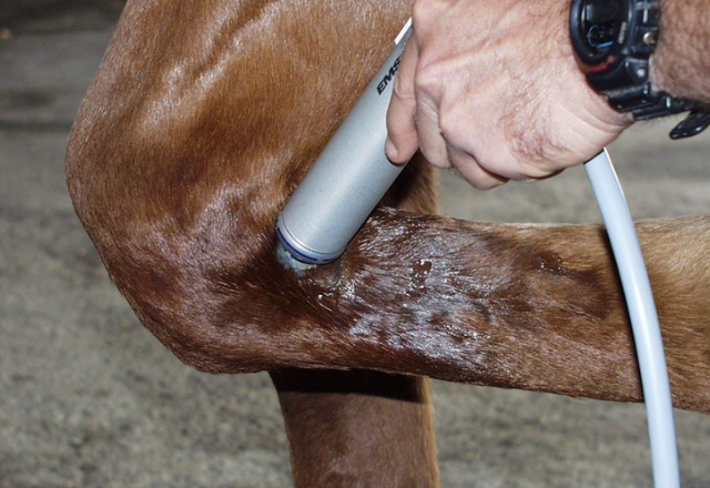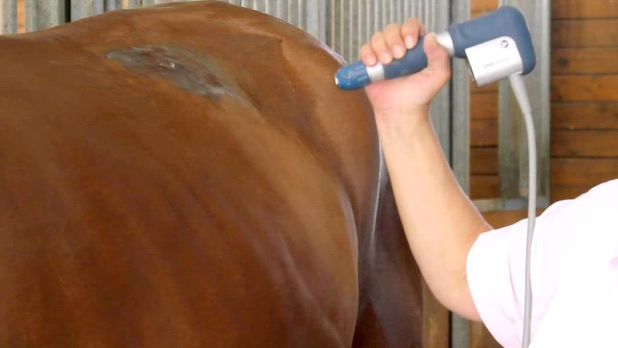Extracorporeal Shockwave Therapy (ESWT) or just Shockwave Therapy is a method of using sound energy waves in strong pulses created by the shockwave machine and then transferred through a probe which is then applied to all kinds of tissue for varying effects. It was originally developed to break up large kidney stones in humans, but it has become a valuable tool in treating various other issues in both humans and horses. The acoustic sound waves make a distinctive clicking noise (shocks) as they break the sound barrier.
In horses it is used mainly to stimulate the healing process or to reduce pain levels and in the restoration of mobility. Some of the conditions that can possibly be helped with Shockwave Therapy are:
- Tendon injuries, a common cause of injury in athletic horses
- Desmitis (ligament injuries, inflammation), especially where ligaments insert onto bone (e.g., chronic injury/inflammation of the suspensory ligament located at the back of the cannon bone)
- Osteoarthritis (OA, degenerative joint disease), including bone spavin in hocks and ringbone,
- Bone issues such as fractures, stress fractures, sequestrums
- Navicular disease or
- Deep muscle pain.
- Back problems such as kissing spines, articular facet joint OA, Sacro iliac pain

Using various settings on the machine we can control the depth, strength and frequency of the sound waves to adapt the treatment for each individual condition. There are also guidelines, depending on the condition being treated, as to how many treatments to use and the number of days between treatments. It is important to note that these provide only general guidelines and due to the lack of science-based research of exact protocols, we typically must modify Shockwave schedules to fit each patient’s individual needs and response to therapy.
The exact way in which shockwave works isn’t fully understood however a review article written in 2016 explained that Shockwave impacts not only growth factors that result in healing but also mediators that support blood vessel growth increasing blood supply to injuries. It also increases the number of bone-producing cells (osteoblasts), recruits stem cells to facilitate healing of various tissue types; and appears to provide pain relief. However more research needs to be completed to maximise its potential.

The most important factor in the use of Shockwave therapy is starting with the correct diagnosis. This allows us to be confident that the issue we are treating is amenable to shockwave therapy and allows us to accurately track the progress of the injury. Just assuming a horse has a specific injury and treating the area with Shockwave therapy is often going to result in a poor outcome. Therefore, it is important for us to workup these cases appropriately beforehand and continually follow up so we can adapt the treatment as necessary and decide if there is a need for any other interventions on top of or instead of Shockwave Therapy. Furthermore, shockwave therapy requires appropriate preparation of the area being treated to allow for good penetration of the sound waves into the tissue. When painful areas are treated it can cause pain and discomfort and often horses need to be sedated for the duration of the treatment. For these reasons shockwave should only be done by trained professionals.
Due to its local effect on nerves Shockwave Therapy can give instant and powerful pain relief for a short period after therapy. For this reason, it is banned by Racing Victoria within 7 days of a horse racing and further highlights why injuries should be properly diagnosed before use of Shockwave Therapy.
If you have any questions about Shockwave Therapy and/or you have a horse that you think may benefit from Shockwave Therapy, please get in touch with Southwest Equine.


